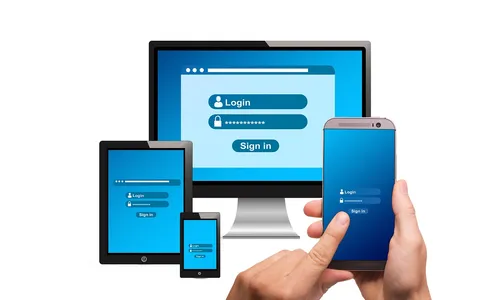Beyond the Hype: How Blockchain Is Seriously Shaking Up Financial Transactions in 2025

Remember sending money to your friend overseas and feeling like you dispatched a carrier pigeon that might or might not arrive with the cash (minus a hefty chunk for "processing")? Yeah, those days are fading faster than your last New Year's resolution. In 2025, blockchain technology isn't just a buzzword mumbled by tech enthusiasts; it's the silent revolution reshaping the very fabric of financial transactions. Forget clunky intermediaries and snail-paced settlements – blockchain is bringing a whole new level of speed, security, and transparency to the world of finance. So, buckle up, grab your favorite digital beverage, and let's dive into how this game-changing technology is making our financial lives smoother, safer, and maybe even a little bit… fun?
The Foundational Magic: Understanding Blockchain in Simple Terms
Before we get into the nitty-gritty of its financial transformation, let's demystify blockchain. Imagine a digital ledger, not stored in one central location, but distributed across a vast network of computers. Every transaction, once verified, gets added as a "block" to this ever-growing "chain" of records. This chain is secured using cryptography, making it incredibly difficult to tamper with. Think of it like a Google Doc that everyone in the world has a copy of, and every edit is transparently recorded and agreed upon by the majority. No single entity controls it, making it decentralized and inherently more trustworthy. This fundamental shift from centralized control is what's fueling the financial revolution we're witnessing in 2025.
Speeding Up the Pace: Say Goodbye to Transaction Delays
One of the most immediate impacts of blockchain on financial transactions is the sheer increase in speed. Traditional banking systems often involve multiple intermediaries, each adding time and fees to the process. Cross-border payments can take days, even weeks, to clear. Blockchain, on the other hand, can facilitate near real-time transactions, regardless of geographical boundaries. Cryptocurrencies, built on blockchain, have already demonstrated this capability. In 2025, we're seeing this speed advantage extend beyond cryptocurrencies to traditional financial institutions adopting blockchain-based solutions for faster settlements and payments. Imagine sending money to a family member abroad and it arriving in their digital wallet almost instantly, without exorbitant transfer fees eating into the amount. That's the power of blockchain in action.
Fort Knox in Your Pocket: Enhanced Security and Transparency
Security is paramount when it comes to our finances, and blockchain delivers on this front with robust cryptographic techniques. Once a transaction is recorded on the blockchain, it's virtually immutable, meaning it cannot be altered or deleted. This transparency and immutability build trust and reduce the risk of fraud. Every transaction is publicly viewable (though the identities of the participants are often pseudonymous), creating an auditable and transparent system. In 2025, this enhanced security is proving particularly attractive for high-value transactions, supply chain finance, and combating financial crime. Knowing that your financial dealings are recorded on a secure and transparent ledger provides a level of peace of mind that traditional systems often struggle to match.
Decentralized Finance (DeFi): A Paradigm Shift in Financial Services
Perhaps the most radical transformation driven by blockchain is the rise of Decentralized Finance (DeFi). DeFi aims to recreate traditional financial services – lending, borrowing, trading, insurance – in a decentralized manner, without the need for traditional intermediaries like banks. Built on blockchain platforms like Ethereum, DeFi protocols utilize smart contracts – self-executing agreements written in code – to automate financial processes. In 2025, DeFi is no longer a niche experiment; it's a burgeoning ecosystem with billions of dollars in value locked in various protocols. From earning interest on your digital assets to taking out collateralized loans and trading cryptocurrencies on decentralized exchanges, DeFi is offering individuals greater control and access to financial services. While still evolving and carrying its own set of risks, DeFi represents a fundamental shift towards a more open and accessible financial future.
Smart Contracts: Automating Trust and Efficiency
Smart contracts are the unsung heroes of the blockchain-powered financial revolution. These self-executing contracts automatically enforce the terms of an agreement when predefined conditions are met. Imagine a loan agreement that automatically disburses funds and collects repayments based on the terms coded into the smart contract, without the need for manual intervention or the risk of disputes. In 2025, smart contracts are being deployed in a wide range of financial applications, from automating escrow services and facilitating peer-to-peer lending to streamlining insurance claims and managing digital assets. They eliminate the need for intermediaries, reduce costs, and increase efficiency by automating complex financial processes with unprecedented transparency and trust.
The Tokenization of Everything: Unlocking New Asset Classes
Blockchain technology enables the tokenization of assets – representing real-world assets, such as real estate, art, or commodities, as digital tokens on a blockchain. This process fractionalizes ownership, making previously illiquid assets more accessible to a wider range of investors. Imagine owning a fraction of a high-value property or a rare painting, making investment opportunities more democratic. In 2025, tokenization is gaining traction, opening up new avenues for investment and creating more liquid and efficient markets for various asset classes. This not only benefits investors but also allows businesses to raise capital in innovative ways.
Central Bank Digital Currencies (CBDCs): The Future of Sovereign Money?
Governments around the world are also exploring the potential of blockchain technology through Central Bank Digital Currencies (CBDCs). These are digital forms of a country's fiat currency, issued and regulated by the central bank. Unlike cryptocurrencies, which are decentralized, CBDCs would be centralized digital currencies. In 2025, several countries are in advanced stages of piloting or even launching their own CBDCs. The potential benefits include increased efficiency in payment systems, reduced costs, improved financial inclusion, and better control over monetary policy. While the implications of CBDCs are still being debated, their development signals a significant recognition of the transformative power of blockchain technology in the realm of sovereign currency.
Navigating the Challenges: Regulation and Scalability
While the potential of blockchain in transforming financial transactions is immense, there are still challenges to overcome. Regulatory frameworks for blockchain and cryptocurrencies are still evolving globally, creating uncertainty for businesses and consumers. Scalability – the ability of blockchain networks to handle a large volume of transactions quickly and efficiently – is another key challenge that needs to be addressed for widespread adoption. In 2025, significant progress is being made in both these areas, with regulators working towards clearer guidelines and new blockchain technologies emerging that offer improved scalability and efficiency. Overcoming these hurdles is crucial for unlocking the full potential of blockchain in the financial sector.
The Road Ahead: A More Transparent and Efficient Financial Ecosystem
In conclusion, 2025 is proving to be a pivotal year for the integration of blockchain technology into mainstream financial transactions. From speeding up payments and enhancing security to enabling decentralized finance and the tokenization of assets, blockchain is fundamentally reshaping how we interact with money and financial services. While challenges remain, the momentum is undeniable. We are moving towards a future where financial transactions are more transparent, efficient, accessible, and secure, all thanks to the transformative power of blockchain. So, the next time you send money or consider an investment, remember the silent revolution happening behind the scenes – a revolution powered by a chain of blocks that's building a more equitable and efficient financial future for all.
FAQ
What is blockchain technology and how does it relate to financial transactions?
Blockchain is a decentralized, distributed ledger technology that records transactions across many computers. Each transaction is grouped into a "block," and these blocks are linked together chronologically and secured using cryptography, forming a "chain." In financial transactions, blockchain provides a transparent, secure, and immutable record of all dealings, eliminating the need for traditional intermediaries and speeding up processes.
How is blockchain making financial transactions faster?
Traditional financial systems often involve multiple intermediaries, leading to delays in processing transactions, especially cross-border payments. Blockchain can facilitate peer-to-peer transactions or streamline processes by removing these intermediaries, allowing for near real-time settlements and faster transfer of funds.
What are the security benefits of using blockchain for financial transactions?
Blockchain utilizes strong cryptographic techniques to secure transactions. Once a transaction is recorded on the blockchain, it is extremely difficult to alter or tamper with due to the distributed nature of the ledger and the consensus mechanisms required to validate new blocks. This immutability and transparency enhance security and reduce the risk of fraud.
What is Decentralized Finance (DeFi) and how is blockchain enabling it?
Decentralized Finance (DeFi) is an ecosystem of financial applications built on blockchain technology, primarily Ethereum. It aims to provide traditional financial services like lending, borrowing, and trading in a decentralized manner, without relying on traditional financial institutions. Blockchain provides the underlying infrastructure and smart contract capabilities that enable these decentralized applications to function autonomously and transparently.
What are smart contracts and how are they transforming financial transactions?
Smart contracts are self-executing agreements written in code and stored on the blockchain. They automatically enforce the terms of a contract when predefined conditions are met, without the need for intermediaries. In financial transactions, smart contracts can automate processes like loan disbursements, escrow services, and asset transfers, increasing efficiency and reducing the risk of disputes.
What is the tokenization of assets and how does blockchain facilitate it in finance?
Tokenization is the process of representing real-world assets (e.g., real estate, art, commodities) as digital tokens on a blockchain. This allows for fractional ownership, increased liquidity, and easier trading of previously illiquid assets. Blockchain provides the platform for creating, managing, and trading these digital tokens securely and transparently.
What are Central Bank Digital Currencies (CBDCs) and what role does blockchain play in their development?
Central Bank Digital Currencies (CBDCs) are digital forms of a country's fiat currency, issued and regulated by the central bank. While not all CBDCs are built on blockchain, the technology's features like security, transparency, and programmability make it a potential underlying infrastructure for some CBDC initiatives. Blockchain can offer benefits in terms of efficiency, security, and traceability for digital sovereign currencies.
What are the main challenges facing the widespread adoption of blockchain in financial transactions?
Some of the key challenges include the evolving regulatory landscape, which creates uncertainty for businesses and consumers; scalability issues, where some blockchain networks struggle to handle a high volume of transactions; and the need for greater interoperability between different blockchain networks and traditional financial systems.
Explore more blogs on technology:




